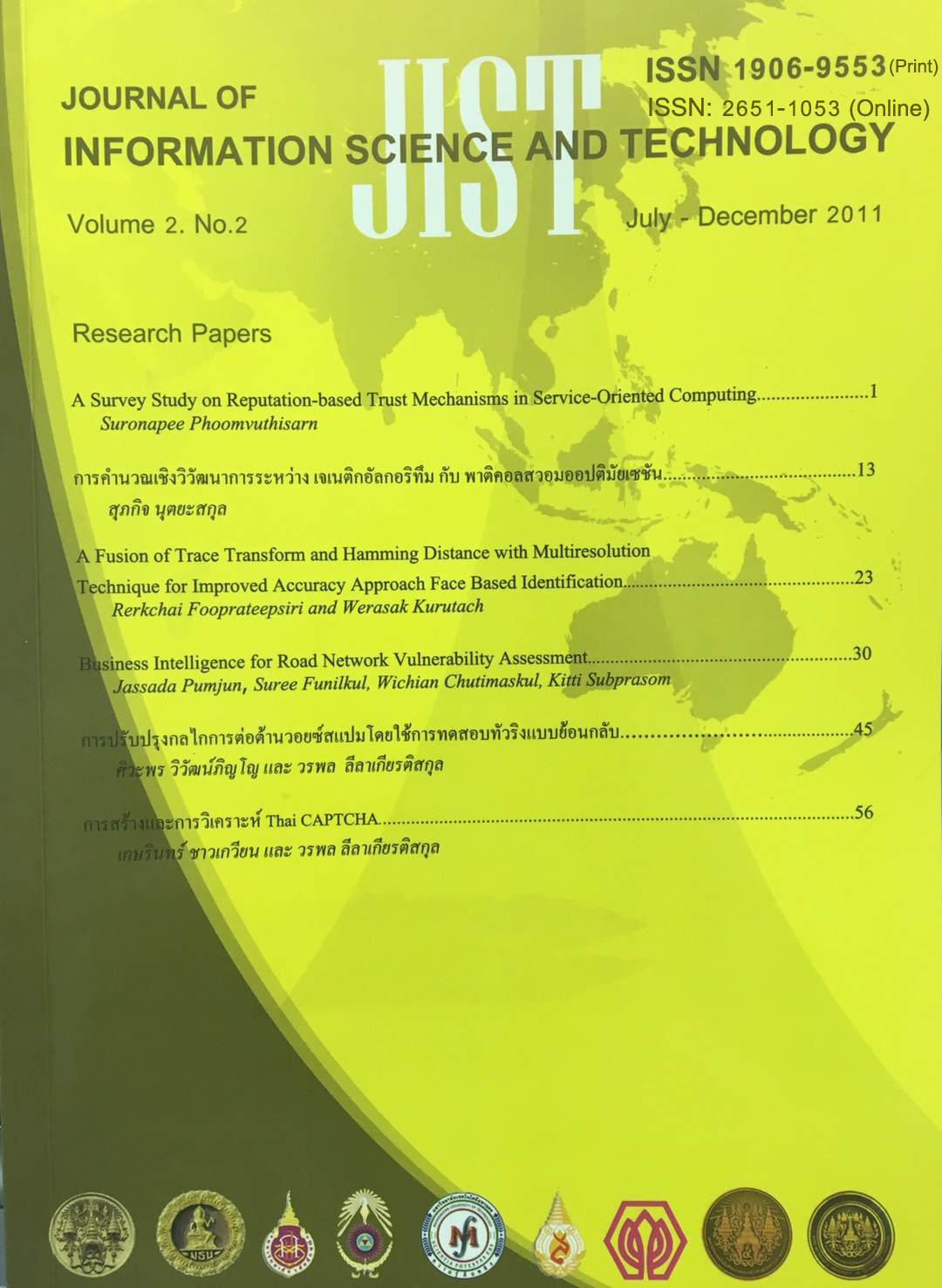Improvement on the anti-VoIP spam mechanisms using Reverse Turing Test
Main Article Content
Abstract
- Voice-Spams have been one of a major threat of Internet telephony services not only annoying users but being a tool for some electronic criminals also. Since, voice-spam is a suite of automated voice that will call for any purposes without permission of callees. We thus propose an improvement on the anti-VoIP spam mechanism using Reverse Turing Test to prove whether the call is from human or not before reaching the recipient. If it is a call from human, system will forward the call and the username belonging to the call will be recorded in white list, not be tested for next time calling. On the other hands, if the test indicates that calls is not from human, system will mark it as a spam then call is not forwarded and username will be recorded in black list, calls will be dropped for next time calling.
Article Details
This work is licensed under a Creative Commons Attribution-NonCommercial-NoDerivatives 4.0 International License.
I/we certify that I/we have participated sufficiently in the intellectual content, conception and design of this work or the analysis and interpretation of the data (when applicable), as well as the writing of the manuscript, to take public responsibility for it and have agreed to have my/our name listed as a contributor. I/we believe the manuscript represents valid work. Neither this manuscript nor one with substantially similar content under my/our authorship has been published or is being considered for publication elsewhere, except as described in the covering letter. I/we certify that all the data collected during the study is presented in this manuscript and no data from the study has been or will be published separately. I/we attest that, if requested by the editors, I/we will provide the data/information or will cooperate fully in obtaining and providing the data/information on which the manuscript is based, for examination by the editors or their assignees. Financial interests, direct or indirect, that exist or may be perceived to exist for individual contributors in connection with the content of this paper have been disclosed in the cover letter. Sources of outside support of the project are named in the cover letter.
I/We hereby transfer(s), assign(s), or otherwise convey(s) all copyright ownership, including any and all rights incidental thereto, exclusively to the Journal, in the event that such work is published by the Journal. The Journal shall own the work, including 1) copyright; 2) the right to grant permission to republish the article in whole or in part, with or without fee; 3) the right to produce preprints or reprints and translate into languages other than English for sale or free distribution; and 4) the right to republish the work in a collection of articles in any other mechanical or electronic format.
We give the rights to the corresponding author to make necessary changes as per the request of the journal, do the rest of the correspondence on our behalf and he/she will act as the guarantor for the manuscript on our behalf.
All persons who have made substantial contributions to the work reported in the manuscript, but who are not contributors, are named in the Acknowledgment and have given me/us their written permission to be named. If I/we do not include an Acknowledgment that means I/we have not received substantial contributions from non-contributors and no contributor has been omitted.
References
2. Roman Schlegel et al. “SPam over Internet Telephony (SPIT) Prevention Framework”
3. M. Hirschbichler, et al., "Using E-Mail SPAM DNS Blacklists for Qualifying the SPAM-over-Internet-Telephony Probability of a SIP Call," in Digital Society, 2009. ICDS '09. Third International Conference on, 2009, pp. 254-259.
4. CAPTCHA. สามารถเข้าถึงข้อมูลได้จาก : http://en.wikipedia.org/wiki/CAPTCHA.
5. “Spamhaus Block List.”, สามารถเข้าถึงข้อมูลได้จาก : http://www.spamhaus.org/whitepapers/dnsbl_function.html



